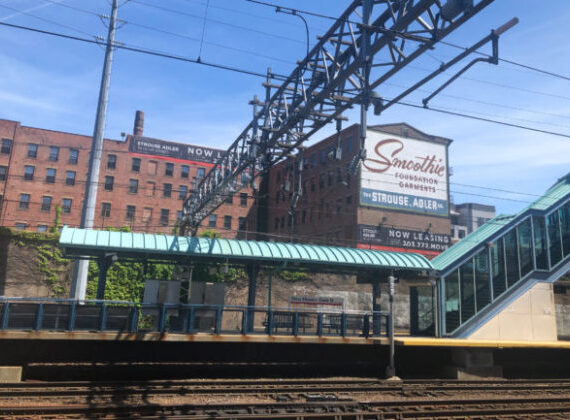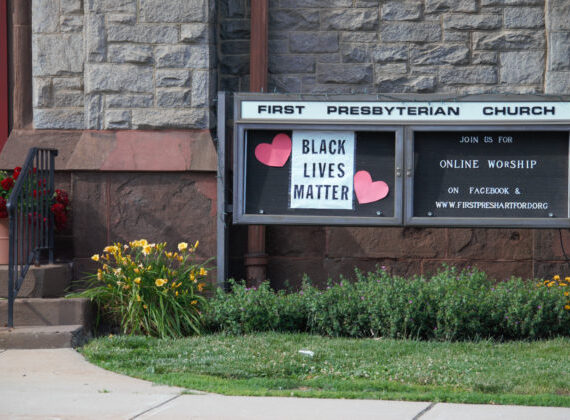
It’s colder. It’s snowier. Winter does not officially begin for a few more days, but it’s time for a little how-to for people who are either new to the area or have been here their whole lives but had not lived independently until now.

-
- What is the deal with the parking ban? Why does the mayor want to oppress us?
It is puzzling that adults need to be issued parking bans at all. Common sense dictates that we all benefit from removing cars from city streets when it snows. Cars left on the street become obstacles for plows, meaning that not as much of the street gets cleared. If we only experienced one storm per season, this probably would not be a huge deal. Many streets could use narrowing to slow traffic and add safety, but at some point, it becomes an actual parking nightmare in the neighborhoods, and depending on the street, can create significant delays. On a main road, that snow also becomes a hurdle for people getting on and off buses. That’s a simple adrenaline rush obstacle course for those who are fit and able; less amusing for people using mobility devices, or heck, even those who have shorter legs.
Forget the whole respecting neighbors and community part of this. Why would anyone want to leave their cars on the street at the risk of them getting nailed by either a massive snow plow or a car skidding out-of-control? It may not be convenient to park in one of the many free lots available during these parking bans, yet living in New England is not a choice one makes because anything about it is especially convenient. If the off-street parking lots are an issue, go talk to neighbors to see who has extra space in their driveways. Nobody has to become besties and start baking pies together, but if we deep down wanted to isolate ourselves, wouldn’t we opt to live out in the sticks where our closest neighbors are visible only with binoculars?
So, that’s the common sense approach. But it seems not everyone is hardwired to want cleared streets or to avoid vehicular damage. And, to be fair, if someone just moved north from a region where a single snowflake shuts down the entire state, it could take a season to pick up on how things work in New England. This is where parking bans come in. During this season’s first storm, I was literally woken up by a City of Hartford text announcing the parking ban. Once I got over my initial annoyance that it was from the City and info I already knew, rather than cat pictures from friends, I was grateful that something useful was being done with tax dollars. Like I said, this was info I already had — not because I am some unicorn with connections, but because I noticed that the blue lights were flashing at major intersections and saw the announcements on Twitter. It was on Facebook. These were likely on television, if anyone still watches that. Police drive down streets, blasting out warnings from their cruisers.
Once an alert is issued, the thing to do is figure out which lot to use — usually a public school, but see full list here — and then move the car. The alert will indicate when ban is over and vehicles should be removed from lots; there are signs posted at these lots that should include that information. It might seem harsh to tow vehicles remaining on the street or in these lots when they’ve worn out their welcome, but it comes down to responsibility. If we want children to be taught, we have to provide their teachers with access to school parking lots. If we want our streets to not be lined with icebergs, then we need to make it so plow drivers can do their jobs well and without excuses.
- What is the deal with the parking ban? Why does the mayor want to oppress us?
-
- How do I drive in the snow?
I took and passed my driving test in a snow event, so I am especially biased about this matter, in that people who have not practiced have no business on the road. Find an empty parking lot somewhere and learn how to maneuver the car. Get someone — who has both experience and success at winter driving — to show you how it is done. Figuring out how to come out of a skid is best learned not when there are other moving cars around.
Drive with your lights on so that you can be seen. If not snow tires, at least don’t be driving around with bald tires. Go slow and steady. Yes, even if you’re in a pickup truck. Gunning it is a bad idea, as is slowing way down while trying to go up hills. Don’t brake hard. Definitely do not be driving around drunk or under the influence. During the first snow storm of the 2017-2018 season, I took a walk for a few miles and observed that about 30% of people driving in two different Hartford neighborhoods were objectively doing it wrong. Those are scary odds. To be more exact, a large number of drivers were making decisions that would potentially tie up tow trucks, ambulances, and other emergency services.
If you need to know more, check out this guide: “How To Drive In The Snow, In A Regular-Ass Car, Without Freaking Out.”
- How do I drive in the snow?
-
- What if I don’t drive?
There are still adjustments to be made about traveling in cold weather. Unlike the milk and bread thing (see below) the obsession with dressing in layers has merit. You start out freezing, get sweaty by the time you reach the bus stop, feel comfortable on the bus, get off and freeze again. It probably is not possible to be 100% comfortable on the coldest days of the year, but you can get close. You can double up on leggings or put on three flannel shirts. It’s winter. It’s New England. Are you a model? Then stop worrying about it.
If you are walking, consider getting crampons/cleats. It’s not hard to find a pair for under $25. If not abused, they should last at least a few seasons. You will be more likely to remain upright on your commute. They are ugly. You know what else is ugly? Giant bruises and broken bones.
This is a fine time to remind everyone that shoveling sidewalks is not an act of tidying up. It’s equal to plowing the roads, even if those sidewalks happen to be inside parks. Many people who walk to work use those paths that are commonly thought of as nothing beyond mere recreation. That would be like refusing to plow I-84 properly because some people drive on it to go on vacation or visit friends, rather than use it strictly as a way to get to work.
- What if I don’t drive?
-
- Do I need to buy milk and bread?
Well, do you? Are these things you normally consume and absolutely cannot go without for one day? What is the plan for this milk if you lose power? Are you going to stick it in a snowbank? If you are living in a city where it is possible to walk or take a bus to markets, even if it means trading Big Organic in the suburbs for whatever you can find in a preservative-laden bodega, then ask if it is worth the trouble to deal with the crowded pre-storm grocery stores. In reality, most storms — winter or otherwise — that we experience inland, in New England, do not shut down commerce for days on end. The box of cereal, Saltines, half-eaten block of cheddar cheese, can of black beans, and handful of granola bars in your cupboard can probably get you through the day. Maybe hit the package store to make sure you have something to add to the hot cocoa you’ll be enjoying between rounds of shoveling.
- Do I need to buy milk and bread?
-
- Do I have to call it a “snow day”?
No, especially if you are someone who still has to work regardless of the weather. You also do not need to stay inside by a fire, take selfies with your hot cocoa, or use words like “cozy.”
- Do I have to call it a “snow day”?
- Why are some restaurants still open in storms? Don’t they care about their employees?
There are definitely times to bag it. But a business in Hartford is at an advantage in storms because it is unlikely to lose power and there is potentially — depending on how that business markets itself — a local, in walking distance, customer base. This is a strong case for why local businesses should hire local residents. Asking someone to walk a few blocks to work their shift is doable; expecting an employee to drive 10-20 miles on icy roads is foolish. Still, some establishments have found ways of making it work, whether by creating longer shifts that start before the storm or having a couch available. Ultimately, this is a matter of asking questions before assuming that an owner/manager hates the staff.



Richard
These are the type of wonderful articles that make me love what you do at Real Hartford.
As a walker I use Yaktrax on my boots. They sure help to get around when there is a lot of ice and packed snow where sidewalks aren’t shoveled in those no persons land. The only thing one has to remember is to take them off arriving at work or home. They are really bad on marble floors. Yeah folks shovel those walks even if you have to do it again or I will call up the city who really doesn’t care. (just look at what the downtown corporations get away with) Do I need to buy bread and milk ha ha. Only if you want to act the fool like everyone else. I have a nice cupboard with food just for occasions like that. I can survive without running out to the store. I have been very lucky in my 40 years in Hartford my power, even when hurricanes came though has never gone out. Snow storms bother me, no way. I lived in an elegant shack way up on Ohayo Mountain before I came to Hartford and when Blizzard Larry came through I woke to find snow all over my house.
Holiday Wishes to everyone.